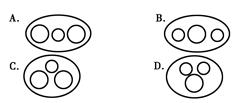“Choo,Choo!”Here comes the Chunnel train. Get aboard if you want to learn more about this underground transportation system. This is an unusual form of transportation, because it is a tunnel that trains travel through and not an actual form of transportation.
The Chunnel is actually the English nickname for the Channel Tunnel. In French,it is called le tunnel sous la Manche. It is a rail tunnel beneath the English Channel at the Straits of Dover. It connects Cheriton in Kent, England with Sangatte in northern France. It is the second longest rail tunnel in the world.
Did you know that the British and the French had a race while they were building the Chunnel? The race was to see who could get to the middle of the tunnel first. The British won by a little bit. It took 15,000 workers over seven years to dig the tunnel. The tunnel was finished in 1994.
The completed Chunnel cost about $21 billion. But it all paid off, because it became very popular, very quick. Millions of people use it. Now it is getting even more popular.
There are three complete tunnels in the Chunnel. The two outside ones are the passenger trains. The small inner one is a guidance train. The guidance train is not used for transportation. Each track is exactly parallel to each other.
There are four different train systems in the Chunnel. The Eurostar is a high speed passenger service that connects London, Paris, Brussels and Lille. The Eurotunnel shuttle is a rail ferry service. These shuttles carry cars and vans. These are railcars that allow drivers to drive their vehicles on and off. There are also two Eurotunnel goods service trains.
Now you know more about the Chunnel. Everybody off,this is the last stop.
小题1:The Channel Tunnel links ________with________.
A.London; Paris
B.Cheriton; Sangatte
C.Lille; Brussels
D.Dover; Kent小题2:Which of the following shows the structure of the tunnels in the Chunnel?

小题3:The Eurotunnel shuttle is intended to carry________.
A.passengers
B.drivers and their vehicles
C.goods
D.staff members of the Chunnel小题4:The text can most probably be ________.
A.found in a guidebook
B.read in a magazine
C.broadcast on a train
D.heard in a railway station
小题1:B
小题2:A
小题3:B
小题4:C
题目分析:本文是列车上的广播内容。介绍英吉利海峡隧道,又称海峡隧道或欧洲隧道,它的规模之大,耗时之长,费用之巨,设计之巧,让世人叹为观止。
小题1:细节理解题。根据第二段倒数第二句. It connects Cheriton in Kent, England with Sangatte in northern France.中的内容可知英吉利海峡隧道连接的是英国的Cheriton 和法国的Sangatte。选B
小题2:细节理解题。根据第五段中的“three complete tunnels; two outside ones; The small inner one”可判断A 项是隧道的构造图。
小题3:细节理解题。根据倒数第二段第三句、第四句和第五句中的内容可知这种隧道用来运载司机和车辆。选B
小题4:推理判断题。结合第一段第二句中的内容以及最后一段中的内容可推断本文是列车上的广播内容。选C
